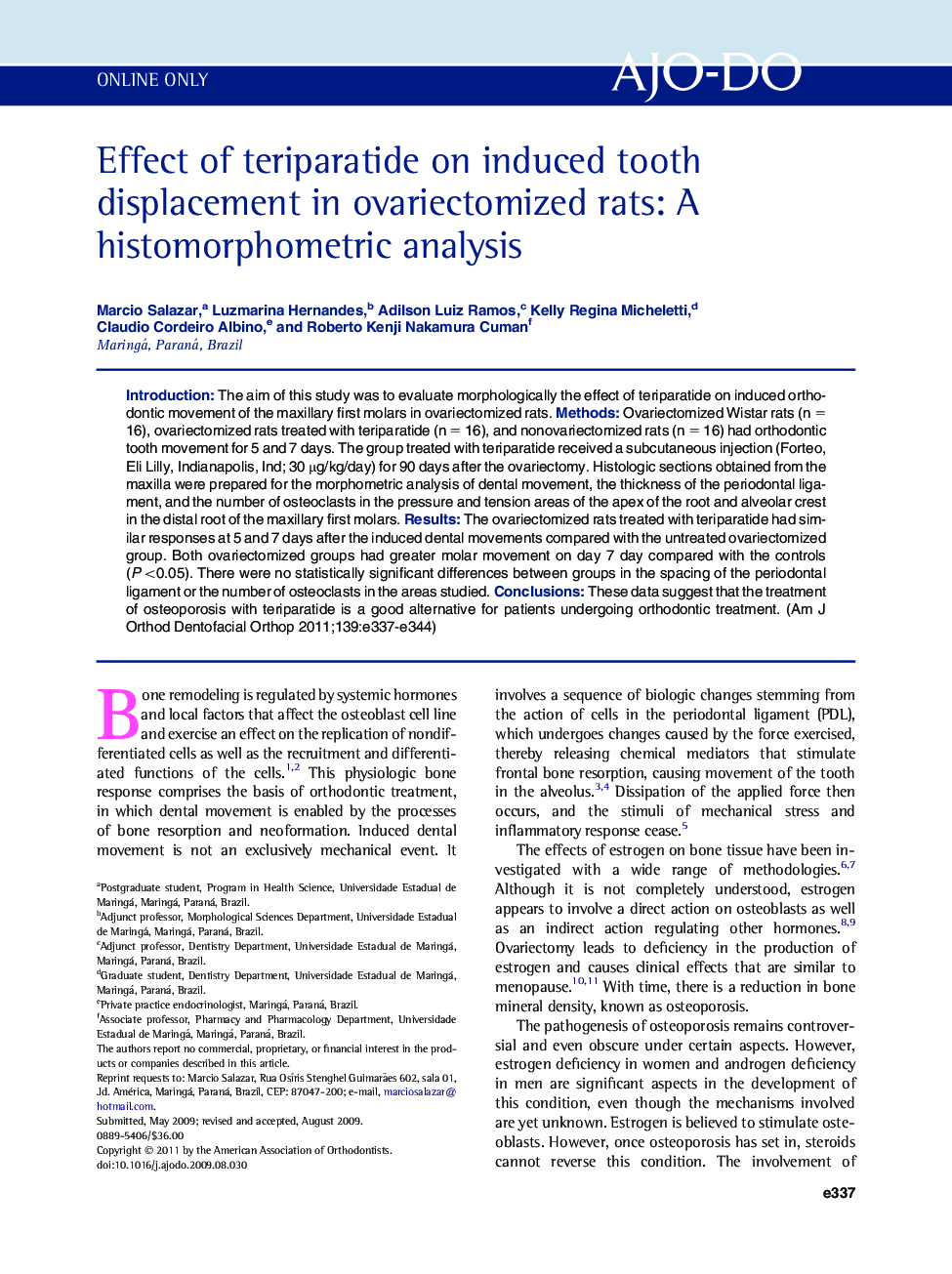| Article ID | Journal | Published Year | Pages | File Type |
|---|---|---|---|---|
| 3117695 | American Journal of Orthodontics and Dentofacial Orthopedics | 2011 | 8 Pages |
IntroductionThe aim of this study was to evaluate morphologically the effect of teriparatide on induced orthodontic movement of the maxillary first molars in ovariectomized rats.MethodsOvariectomized Wistar rats (n = 16), ovariectomized rats treated with teriparatide (n = 16), and nonovariectomized rats (n = 16) had orthodontic tooth movement for 5 and 7 days. The group treated with teriparatide received a subcutaneous injection (Forteo, Eli Lilly, Indianapolis, Ind; 30 μg/kg/day) for 90 days after the ovariectomy. Histologic sections obtained from the maxilla were prepared for the morphometric analysis of dental movement, the thickness of the periodontal ligament, and the number of osteoclasts in the pressure and tension areas of the apex of the root and alveolar crest in the distal root of the maxillary first molars.ResultsThe ovariectomized rats treated with teriparatide had similar responses at 5 and 7 days after the induced dental movements compared with the untreated ovariectomized group. Both ovariectomized groups had greater molar movement on day 7 day compared with the controls (P <0.05). There were no statistically significant differences between groups in the spacing of the periodontal ligament or the number of osteoclasts in the areas studied.ConclusionsThese data suggest that the treatment of osteoporosis with teriparatide is a good alternative for patients undergoing orthodontic treatment.
